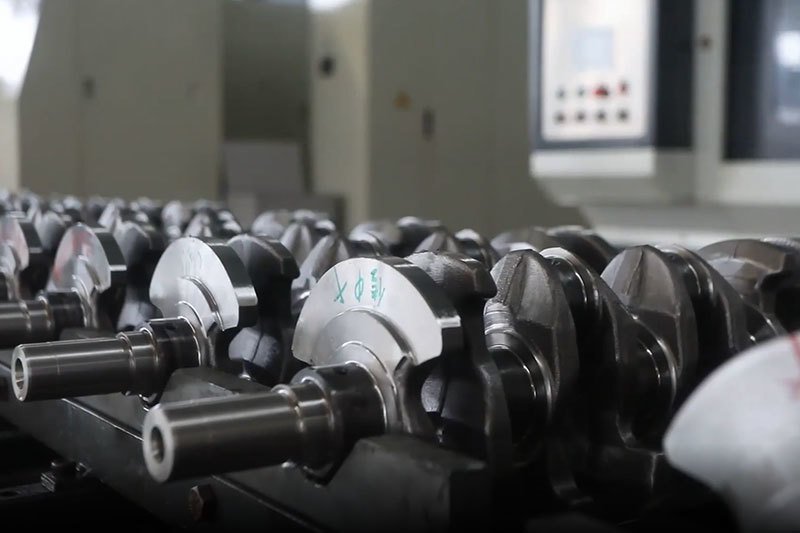
News detail
Announcement of "Detailed Investigation on Remediation of Contaminated Soil in the Old Plant Area of Nangong Jingqiang Connecting Rod Co., Ltd."
Release time: 2022-12-20
Hebei Qinyuan Environmental Protection Technology Co., Ltd. carried out a detailed survey on the land in the old plant area of Nangong Jingqiang Connecting Rod Co., Ltd., with the main contents as follows:
1. Preliminary survey: The old plant area of Nangong Jingqiang Connecting Rod Co., Ltd. was built in 1962. Before the plant was built, it was farmland and wasteland. At the beginning of the plant, it mainly produced connecting rods for internal combustion engines. After years of continuous expansion, in 1988, a new forging workshop, a finished product workshop, a blank workshop and other workshops were built. In 2003, the old factory stopped production. In 2006, after policy bankruptcy and reorganization, the enterprise moved to Nangong Industrial Zone, Hebei Province as a whole. The original equipment in the original factory was removed, and the old factory is still idle. The survey site area is subsequently planned as residential land.
2. Detailed survey, sampling and analysis of the site environment: The project will make full use of the early survey results to densify the distribution of points around the points exceeding the standard in the preliminary survey. According to the historical use and pollution characteristics of the original site, and in accordance with the Technical Guidelines for Site Environmental Monitoring (HJ25.2-2014), the layout of soil monitoring points for site sampling and investigation of the Project is carried out.
3. The spatial distribution of pollutants exceeding the standard in the two phases of investigation: the maximum pollution depth of the site's pollution factor is 5.8m, and the buried depth of the soil is 6.5m. The topsoil and shallow soil of the site are silt and silty clay, which are relatively thick. According to the principles of future excavation depth of the site, the construction depth of the basement and the reduction of the earthwork volume, the spatial distribution of pollutants is generalized into four layers, namely, the first layer 0-1.5m (some point pollutants exceed the standard only within 0.5m of the topsoil), the second layer 1.5-3.0m (the estimated depth of the basement is 3m underground) The third layer is 3.0-5.0m (the exceeding depth of some points is 4.0m, and the 5.0m detection does not exceed the standard), and the fourth layer is 5.0-6.5m (the maximum pollution depth of the site is 5.8m, and the 6.5m soil detection does not exceed the standard).
According to the preliminary investigation results of soil environment in the early stage and in combination with the detailed investigation results, the concentrations of copper, nickel, hexavalent chromium and petroleum hydrocarbons in the soil within the site exceed the first category of land screening value standard in the Standard for Soil Environmental Quality Control of Soil Pollution Risk in Construction Land (Trial) (GB36600-2018). The vertical layers of pollution can be divided into four layers: 0-1.5m, 1.5-3.0m, 3.0-5.0m and 5.0-6.5m. According to the preliminary investigation and detailed investigation, the concentration of copper, nickel, hexavalent chromium and petroleum hydrocarbons in the soil at the site is centered on the super standard point, and the surrounding control points are used as the boundary to directly outline the range of four layers of soil exceeding the standard.
4. In order to ensure the environmental safety during the redevelopment and utilization of the site, it is recommended to conduct risk assessment on copper, nickel, hexavalent chromium and petroleum hydrocarbons in the soil of the contaminated area. Before the soil environmental risk assessment is completed, land development and construction activities shall not be carried out on the site, and the site shall be closed to prevent irrelevant personnel from entering the site or transporting the soil outside the plot.
For the accuracy and effectiveness of this report, this report is the analysis, evaluation and suggestions made based on the current status of the survey and sampling. In the later period, if there is human disturbance, the distribution of pollutants will be changed, which will affect the accuracy of this report. Therefore, the implementation of risk assessment as soon as possible is conducive to controlling the diffusion of pollutants.
Based on the current survey results, the contents of petroleum hydrocarbons and nickel in soil samples at some sites exceed the Class I land use control value standard in the Standard for Risk Control of Soil Pollution on Construction Land for Soil Environmental Quality (Trial) (GB36600-2018), and risk control or remediation measures need to be taken as soon as possible.
key word:
 ngcc999@126.com
ngcc999@126.com
 0086-0319-5287050
0086-0319-5287050







